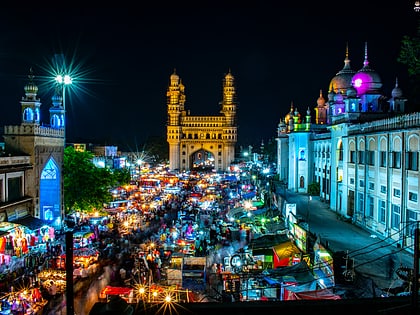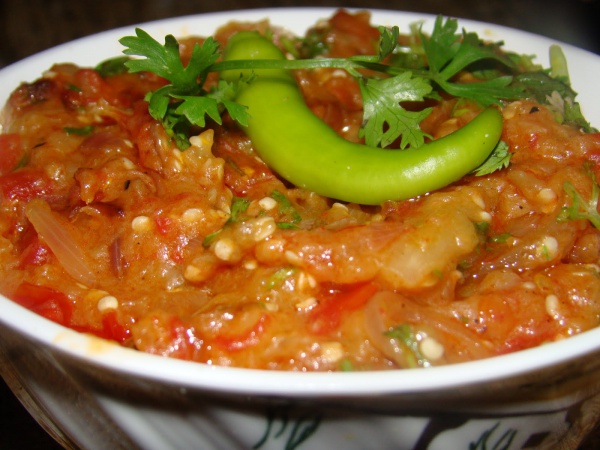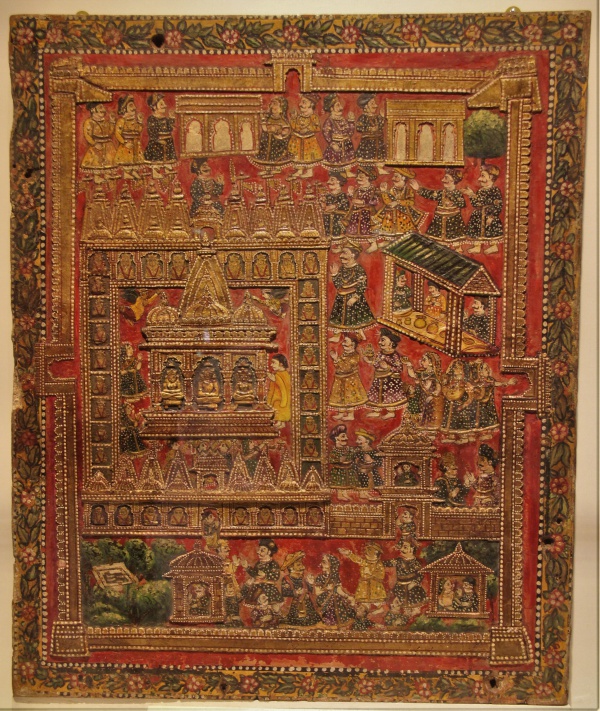
India Travel Guide
| Today in India: Christmas Holiday (26 Dec) |
Season • Note
Are December and January good months to visit India?
December
High
season
January
High
season
Did you know?
The Indian holiday of Maha Kumbhamel, held every 12 years, is considered the largest religious congregation in the history of humanity. It is estimated that about 120 million people participated in the celebrations at Allahabad in 2013.
How far is it?
1. The site uses the Great Circle method of calculating distances between two points on the Earth
2. To change the cities for comparison, change Your Country in settings
The distance between Delhi (IN) and Berlin (DE) is 3593 miles
To calculate distance between your location and Delhi click here
Time • Timezone
Safety
General travel safety level in India on a scale of 1 (safe) to 4 (unsafe).
Level 2 • Exercise a high degree of caution (plus additional regional warnings).
Update: 2 Jul 2025Currency
Indian Rupee (INR) - rate compared to selected currencies
Get ready for your next trip
With just a few clicks you can find the best accommodation, airline tickets, or buy insurance that provides comprehensive protection for your next journey.
Cities and Top Tourist Attractions
From historical cities to picturesque landmarks and fascinating places - don't miss out on these attractions when planning a visit to India
| Miles | Delhi | Mumbai | Chennai | Kolkata | Bangalore | Hyderabad | Ahmedabad | Kochi |
| Delhi | - | 720 | 1092 | 809 | 1080 | 778 | 481 | 1289 |
| Mumbai | 720 | - | 641 | 1032 | 522 | 386 | 280 | 663 |
| Chennai | 1092 | 641 | - | 845 | 178 | 323 | 853 | 343 |
| Kolkata | 809 | 1032 | 845 | - | 968 | 734 | 1004 | 1181 |
| Bangalore | 1080 | 522 | 178 | 968 | - | 311 | 769 | 226 |
| Hyderabad | 778 | 386 | 323 | 734 | 311 | - | 544 | 534 |
| Ahmedabad | 481 | 280 | 853 | 1004 | 769 | 544 | - | 934 |
| Kochi | 1289 | 663 | 343 | 1181 | 226 | 534 | 934 | - |
A Brief History of India
Important historical events that significantly shaped the nation's trajectory throughout the centuries
2500 B.C.
Indus Valley civilization developsThe Indus Valley civilization develops around the valley of the Indus River (now in Pakistan). Its trade is based on crops grown on the fertile river plains. It reaches the height of its power and is larger than any other ancient empire, including that of Egypt.
2000 B.C.
Indus Valley civilization collapsesThe Indus Valley civilization collapses, possibly due to severe floods or a change in the course of the Indus River.
Around 1500 B.C.
The Aryan peopleThe Aryan people, who come from the region between and including India and Europe, invade India from the north. They spread through the Indus Valley and down into the Ganges Valley.
326 B.C.
Indian campaign of Alexander the GreatAlexander the Great of Macedon (northeastern Greece) crosses the Indus River into India.
A.D. 50
Trade flourishesTrade flourishes between India and the Roman Empire. Romans eagerly buy Indian pearls, ivory, silk, spices, cloth and precious stones.
320 - 550
Gupta EmpireAfter centuries of being split into small kingdoms and republics, India is ruled by the Gupta Empire. Under the rule of the Gupta kings, Hinduism becomes the major religion of the empire. Literature, art, architecture and science flourish during this "classical age" of peace and prosperity.
1526
Mogul EmpireThe rule of the Mogul Empire begins, unifying much of south India with the north for the first time.
1600s
Key trading postsEager to gain access to India's spices, rice, silk, tea and jewels, Holland, Great Britain and France establish key trading posts in India.
1638
Taj MahalMogul Emperor Shah Jahan begins construction of the Taj Mahal in memory of his wife Mumtaz.
1858
British take controlThe British overthrow the Moguls and take control of India.
1915
Mohandas GandhiAfter studying law in Britain and fighting for Indian rights in South Africa, Mohandas Gandhi launches a campaign of nonviolent resistance against British rule in India. Gandhi is called Mahatma, meaning "Great Soul".
1947
Independence from BritainIndia gains independence from the British and is divided into two countries, India and Muslim-controlled Pakistan.
1948
Assassination of Mahatma GandhiGandhi was shot on 30 January 1948 by the Hindu fanatic Nathuram Godse.
1966
Indira GandhiIndira Gandhi (not related to Mahatma) becomes Prime Minister and one of the first women elected to lead a nation.
1983
Sports successesIndia wins the cricket world cup.
1998
Nuclear weaponIndia tests its first nuclear weapon, one of only seven nations to have done so.
2000
Population growthIndia's population exceeds 1 billion.
2004 – 2005
Natural disastersA series of natural disasters, including floods, earthquakes and tsunamis, brings destruction to southern coastal communities.
2007
First female presidentPratibha Patil becomes the first female President of India.
Best Ways to Experience India
- Cuisine
- Art
- Animals
Practical Information for Travelers
- Budget
- Currency
- Vaccinations
- Visa
- Electricity
Determine the expenses for your travel or vacation budget, as well as the expenditures associated with residing in another country
MoreBackpacker's budget
Daily budget for one person, assuming that two people travel in a standard close to 1 star (hostels, public transport). When traveling alone, the cost may be slightly higher (hotel room) or the same (dormitory accommodation).from
Tourist's budget
Daily budget for one person, assuming that two people travel (they share the cost of a hotel room, taxis, etc.) to a standard close to 3 stars. Costs for a solo traveler will be higher.from
Currency
MoreIndian Rupee (INR)
- EUR
- GBP
- INR
- USD
- EUR
- GBP
- INR
- USD
| = |
Vaccinations
MoreAll travelers
You should be up to date on routine vaccinations while traveling to any destination. Some vaccinations may also be required in India.
Most travelers
Get travel vaccines and medicines because there is a risk of these diseases in the country you are visiting.
Some travelers
Vaccinations and medications that may be recommended under certain conditions, depending on where you will be, the length of your stay and the nature of your stay.
Cholera
Cholera is a disease of the digestive tract caused by the bacterium Vibrio cholerae.The most common infection occurs through the ingestion, mainly through water contaminated with human faeces, and also through food (mainly fruit, seafood). Less often by contact with the sick person and their environment.Prevention
- Eat and drink safely
- Reduce your exposure to germs
Hepatitis B
Hepatitis B is a disease caused by the hepatitis B virus.Infection occurs through contact of injured skin or mucous membranes with virus-infected blood or other secretions (e.g. during sexual contact, through contaminated needles or as a result of medical procedures).Prevention
- Get vaccinated
- Avoid sharing body fluids
- Avoid non-sterile medical or cosmetic equipment
Japanese Encephalitis
Japanese encephalitis is an infectious disease caused by arboviruses from the same family of microbes (Flaviviridae) that cause yellow fever or tick-borne encephalitis.The vector of infection is mosquitoes of the genus Culex and Aedes.Prevention
- Get vaccinated
- Prevent bug bites
Malaria
Malaria is a life-threatening parasitic disease transmitted by mosquitoes.Prevention
- Take antimalarial meds
- Prevent bug bites
Estimated relative risk of malaria in India
Areas with malaria
Rabies
Rabies is an acute infectious disease caused by neurotrophic viruses from the rhabdovirus family.The infection is most often caused by biting a sick animal or other contact of its saliva with mucous membranes, conjunctiva or damaged skin.Prevention
- Get vaccinated
- Keep away from animals
With or without a visa?
Visa requirements for citizens of
- Germany
visiting India for tourism
A visa is required, but can be obtained through the relevant website.
- Former Indian citizens with an OCI cards are eligible for unlimited travel and stay.
- e-Visa holders must arrive via 26 designated airports or 3 designated seaports. An Indian e-Tourist Visa can only be obtained twice in one calendar year.
Electricity
230V (50 Hz)
In India the standard voltage is 230V and the frequency is 50 Hz. Type C, D, M sockets are used.
Click on the socket icon to see more informationFacts and Figures
Fundamental socio-economic statistical data pertaining to the country
Population | 2 / 231 Ranking | 1 380 004 385 Indo-Aryan 72%, Dravidian 25% |
Area | 8 / 230 Ranking | 1.27 mil. mi² It is approximately 921% of the territory of Germany. |
Life expectancy | 143 / 196 Ranking | 70 Life expectancy expressed in years.men 68.7women 71.5 |
Median age | 61 / 157 Ranking | 28.7 Average age of population expressed in years.men 28women 29.5 |
Population growth | 83 / 172 Ranking | 1.04% The difference between live births and deaths. A negative value means natural loss. |
Literacy | 96 / 131 Ranking | 74.4% Ability to read, write and count.men 82.4%women 65.8% |
GDP | 133 / 194 Ranking | 6 502 INT$ GDP per capita is gross domestic product converted to international dollars (Int$) using purchasing power parity rates and divided by total population. |








































 China
China